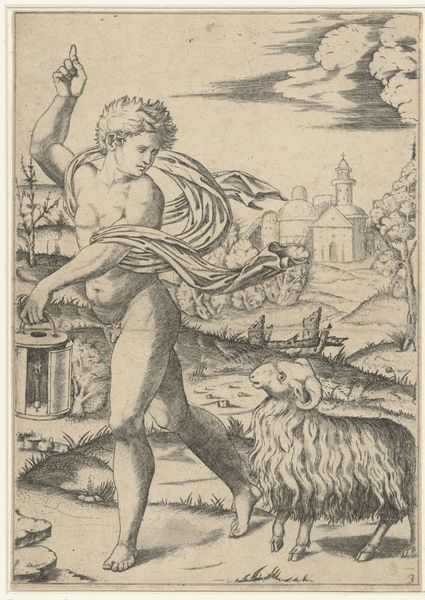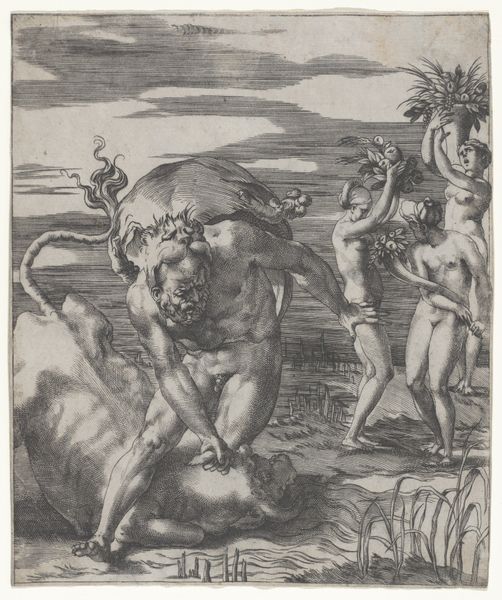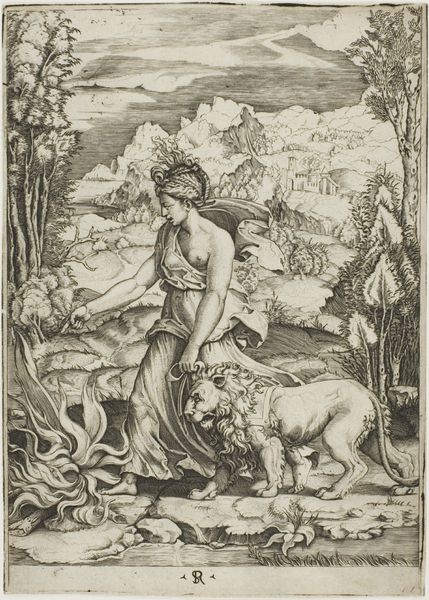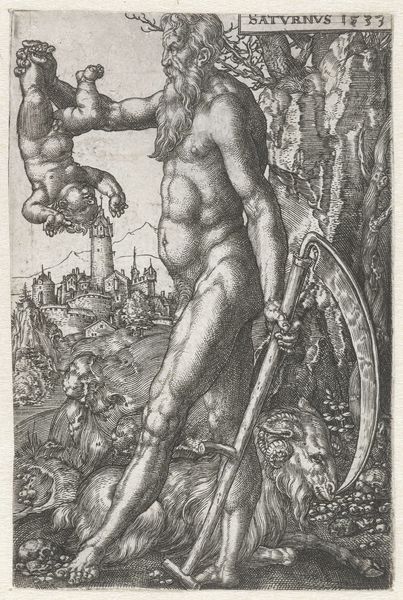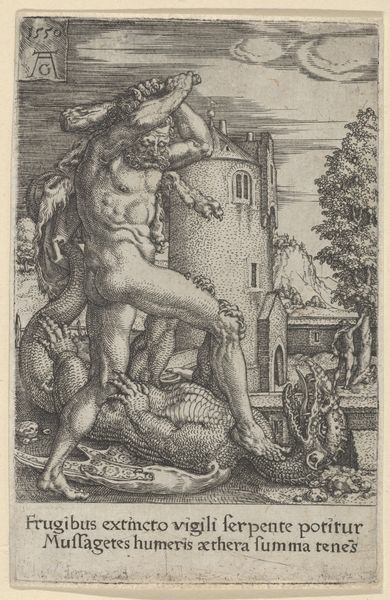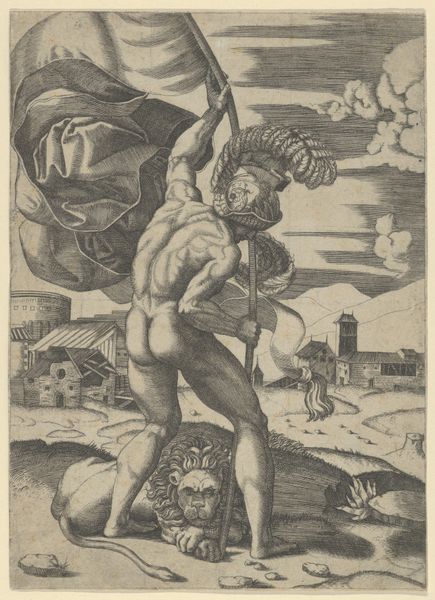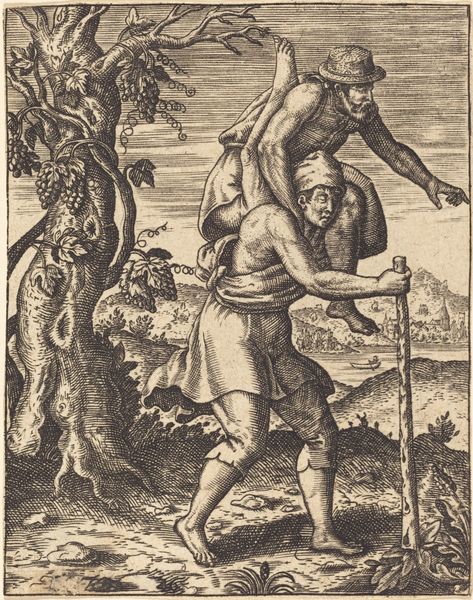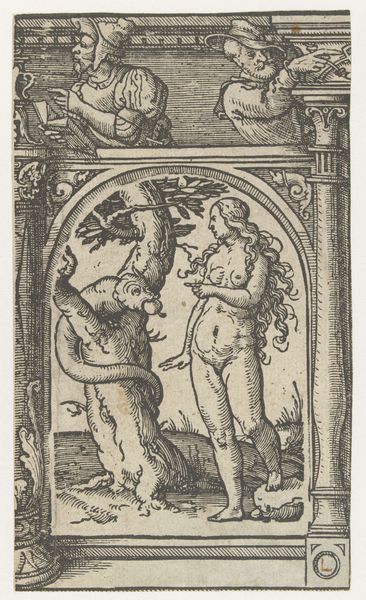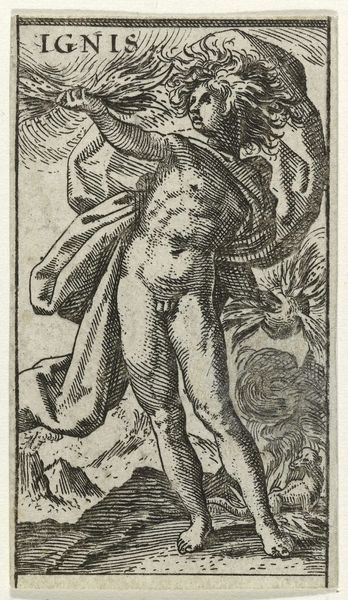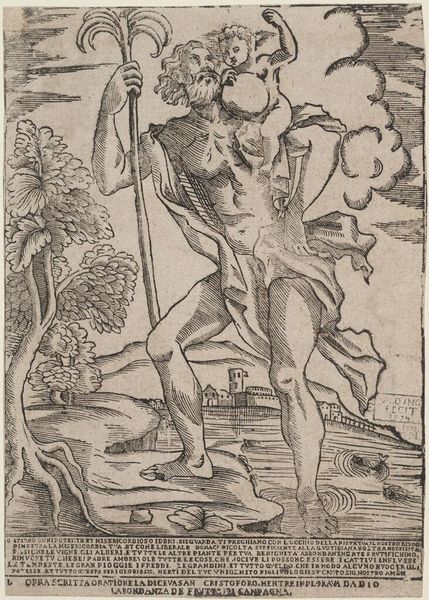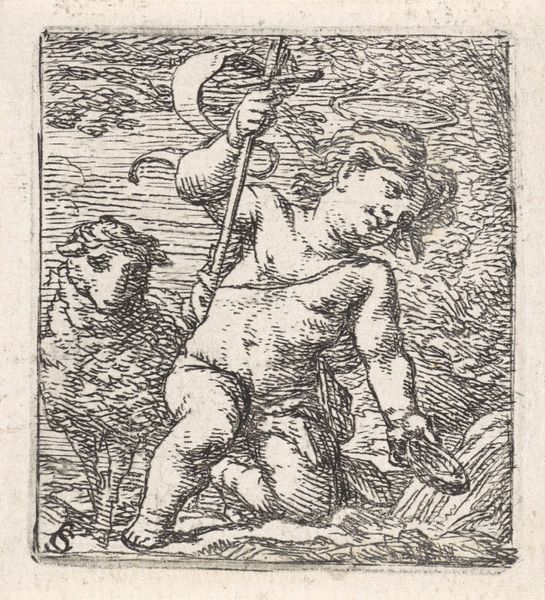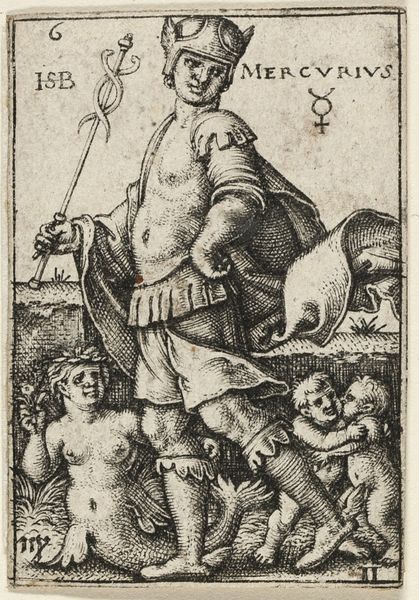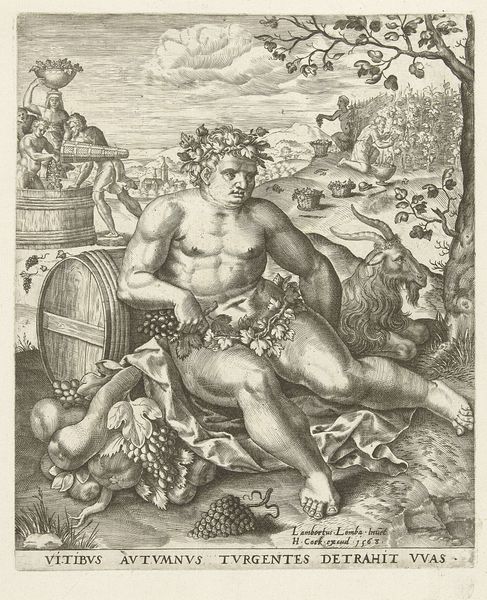
drawing, print, paper, engraving
#
drawing
# print
#
landscape
#
figuration
#
paper
#
11_renaissance
#
italian-renaissance
#
engraving
Dimensions: 175.5 × 130 mm
Copyright: Public Domain
Editor: So, this is Marcantonio Raimondi's "Sign of the Ram," made around 1509. It's an engraving, so it's on paper, and it depicts a nude figure with a ram in a landscape. It feels almost dreamlike because of the hazy background. What stands out to you? Curator: The process of engraving itself is what grabs me. Consider the labor: the artist meticulously carving lines into a metal plate, inking it, pressing it onto paper. This isn't some spontaneous brushstroke. It's a manufactured image, meant for circulation and consumption. Note also the *Italian* Renaissance preoccupation with classical form exemplified by the figure itself. Does it speak to that? Editor: Yes, the figure's pose is very classical, like a Greek sculpture. But how does the landscape factor in? It feels…less idealized than the figure. Curator: Exactly. The landscape, with its suggestion of labor and its rural setting, anchors the idealized figure in a specific social context. This isn’t just about beauty; it's about placing that ideal within a system of production. How might we interpret the inclusion of everyday scenery within this classical allusion, and its potential for the expansion of visual material throughout the public? Editor: I see what you mean. The print makes classical ideals more accessible. Was Raimondi making a statement about art ownership by creating prints? Curator: Perhaps. The print medium challenges the very concept of the unique, precious artwork. Copies could be distributed widely. Think about the social impact – wider accessibility, perhaps altering tastes among different groups. What are your thoughts on this matter? Editor: It democratizes art viewing! So instead of rarefied oil painting reserved for only rich people, prints were mass produced to be purchased. Thank you. This really changes how I see it. I always think of engravings as sort of…reproductions of other art. But you’re pointing out that the process *is* the point. Curator: Precisely. Thinking about the *how* as much as the *what* offers insight into how these images functioned within the social fabric of their time, don't you think?
Comments
No comments
Be the first to comment and join the conversation on the ultimate creative platform.
